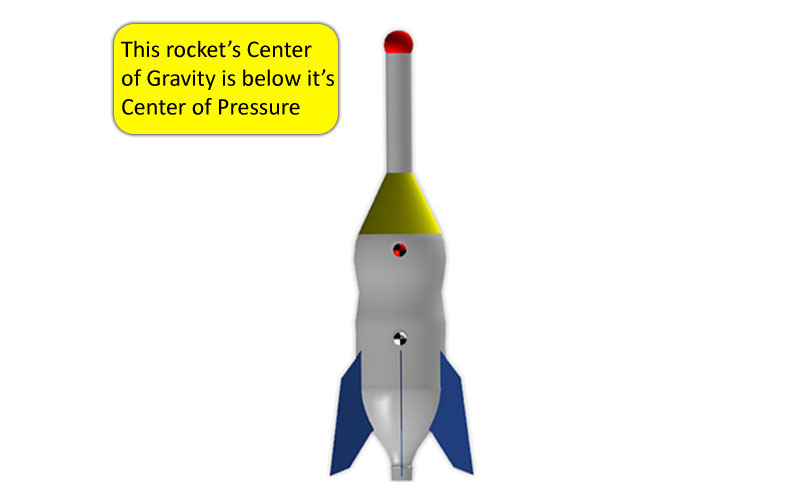Rocket Stability
It is important for a rocket to have and maintain stable flight. In order to maintain stable flight, rotation around all three axes - especially yaw and pitch - must be prevented. The reason controlling rotation is more important around the yaw and pitch axes is because instabiliy about these axes would change the intended flight path. If the rocket was to rotate around the roll axis the flight path would not necessarily change. In order to understand rocket stability you must first learn about two very important points on the rocket. These two points are the center of gravity (CG) and center of pressure (CP).
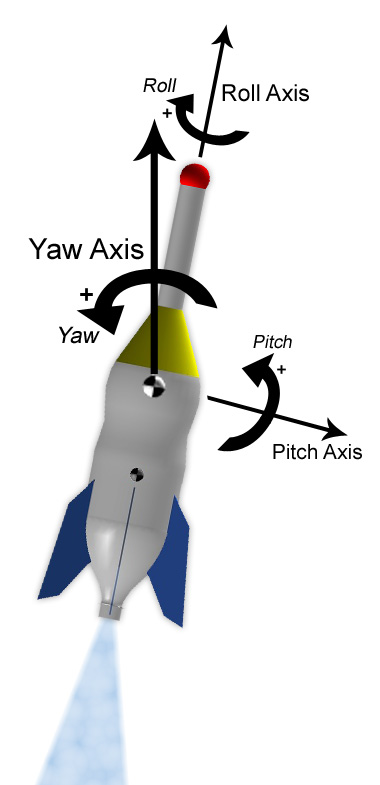
Rocket Rotations
Center of Gravity (Mass)
The center of gravity is the "balance point" of the rocket. If you were to balance a pencil on your finger, the point on the pencil directly above your finger would be the center of gravity. The pencil is in balance because there is an equal amount of mass on the left and right of your finger. This is the same with a rocket. The center of gravity is at the point where the mass on the nose end is equal to the mass on the tail end of the rocket.
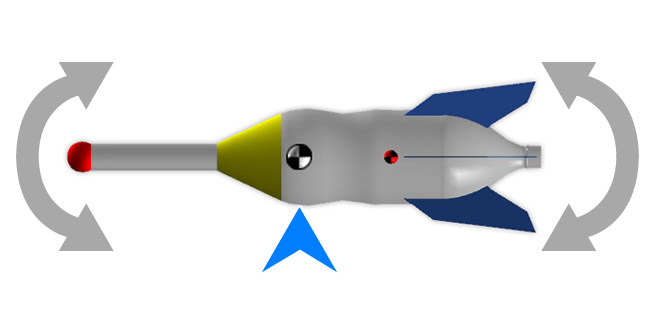
Center of Gravity
To move the center of gravity towards the nose of the rocket, mass should be added to the nose. Use the animation below to adjust the mass at each end of the rocket to see how the center of gravity moves. Remember the equation, mass = density x volume. In the animation you can adjust both the volume and the density to adjust the mass. Adjusting the volume makes the circle change in size. The lower the density the lighter gray the circle, the higher the density the darker gray the circle becomes.


Center of Pressure (Area)
Any wind forces that come into contact with the rocket will act through a single point called the center of pressure. The center of pressure is located where the surface area at the nose of the rocket is equal to the surface area at the tail of the rocket. The way you can change the location of the center of pressure is by adding more material to the nose or tail of the rocket. For example, if you want to move the center of pressure towards the tail, adding an additional fin to the rocket will add surface area to the tail and move the center of pressure towards the tail of the rocket.
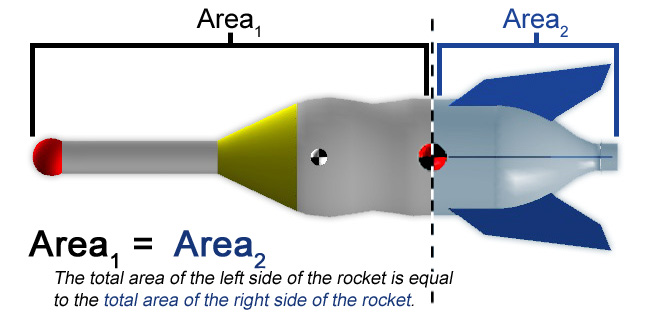
Center of Pressure
Use the animation below to adjust the area at each end of the rocket to see how the center of pressure moves.
What does the Center of Gravity and Center of Pressure have to do with rocket stability?
The most important method for controlling stability around the pitch and yaw axes is to control the location of the center of gravity and center of pressure. The distance between the center of gravity and center of pressure is known as the static margin. Changing the static margin changes the stability of the rocket. The best size of the static margin is based on the bottle size used. A good rule of thumb is that the static margin should be greater than or equal to the bottle diameter (although this is very hard to do with a bottle rocket). A key point to remember is that the center of gravity should be closer to the nose of the rocket than the center of pressure.
Stable Rocket Demonstration
The animation below shows what happens when a stable rocket's intended path gets changed by a gust of wind. The gust of wind rotates the rocket off the intended path. However, the rocket's forward motion through the air exerts an additional force that rotates the rocket back to the intended path.
Click the blue "Next Slide" button in the lower right to go to the next slide.
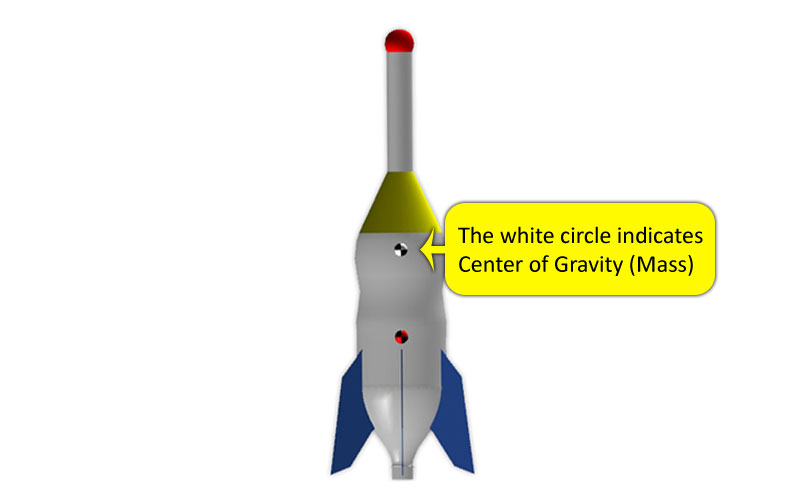
Unstable Rocket Demonstration
The animation below shows what happens when an unstable rocket's intended path gets changed by a gust of wind. The gust of wind rotates the rocket off the intended path. Then, since the center of pressure is above the center of gravity, the motion through the air causes the rocket to continue its rotation and ultimately flip the rocket over.
Click the blue "Next Slide" button in the lower right to go to the next slide.
